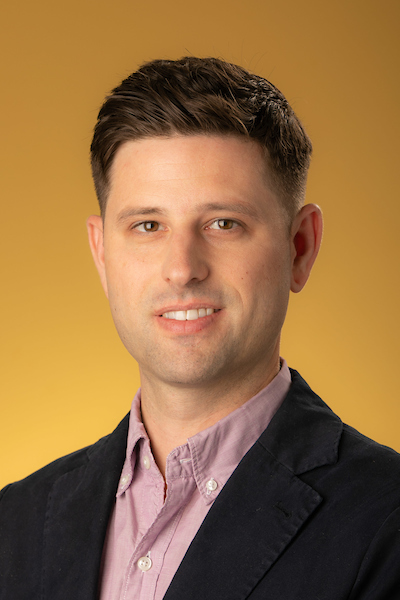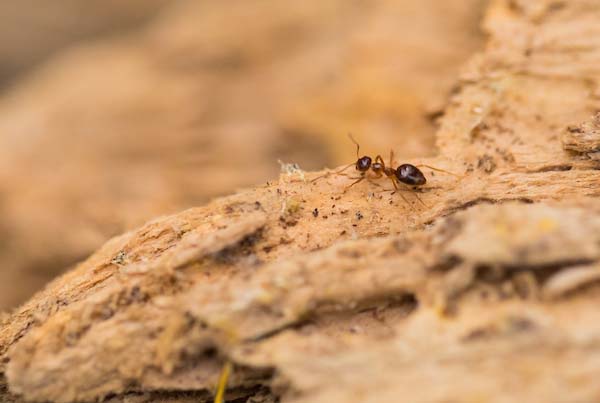

KENNESAW, Ga. | Apr 14, 2021

Among most species of ants, there can only be one queen.
In the case of Indian jumping ants, however, multiple workers can ascend to the throne with a bit of neurological flexibility—which could have implications in the study of regenerating brain tissue in humans.
Kennesaw State assistant professor of biology Clint Penick and his co-authors published these new findings today in Proceedings of the Royal Society B.
“Traditionally, people think that once neural tissue is gone, it doesn't come back,” Penick says. “But we found that when workers of the Indian jumping ant switch caste roles, they can both lose and regrow large regions of their brains. Future understanding of the mechanisms involved in these brain changes might shed light on how brain plasticity is controlled in humans, especially with regards to helping regenerate or repair neural damage.”
The ongoing study shows that within a colony, Indian jumping ant workers recognize when their queen has died, and then participate in a dominance competition to choose a new group of egg-layers, called gamergates. The ants square off and engage in ritualized fighting behaviors until a group of dominant reproductives emerges as the winners. Within a month, these former workers activate their ovaries and start to lay eggs.
In addition to laying eggs, the new gamergates exhibit a range of internal changes, including a 20 percent reduction in brain size. Intrigued by that reduction, Penick and his co-researchers wondered if the opposite could happen as well. Under natural conditions, gamergates rarely if ever return to subordinate worker status, but the researchers devised a way to do just that.
First, the researchers separated gamergates from their colony for several weeks of social isolation. Once isolated gamergates were returned to their colonies, their nestmates no longer accepted them as dominant egg layers, and they forced them back to subordinate status. Penick and his colleagues then imaged their brains using a confocal microscope.
“We found that these brain changes are completely reversible,” Penick says. “This is the first time reversible brain plasticity has been observed in an insect, and only a handful of vertebrate species are known to exhibit anywhere near similar brain plasticity. The Indian jumping ant has emerged as a powerful model to study epigenetic mechanisms underlying plasticity, and now we can add brain plasticity to the list of topics this ant can help us understand.”

Currently in his second year in the College of Science and Mathematics, Penick called this paper a work eight years in the making. His interest in these ants began during his doctoral studies at Arizona State. The latest paper follows up on the discovery by Penick and several co-authors in 2014 of neurohormonal changes that accompany the combat “tournaments” and the reproductive hierarchies within a colony of Indian jumping ants.
Penick studies ants, bees and termites — all social insects — as an evolutionary biologist, drawing a link between how they interact and build communities and how human beings do the same. Such social behaviors resemble humans’ social interactions, Penick says, and his work focuses on the internal changes in these insects.
Grant funding for the study came from a Howard Hughes Medical Institute Collaborative Innovation award, and a KSU Mentor-Protégé grant funded two undergraduate students in Penick’s lab.
This is the third time Penick has published in the Proceedings of the Royal Society B, having published previously as a postdoctoral researcher in 2015 on urban ant diets, and again in 2019 on ant microbiomes, just before he arrived at KSU.
– Dave Shelles
A leader in innovative teaching and learning, Kennesaw State University offers undergraduate, graduate, and doctoral degrees to its more than 51,000 students. Kennesaw State is a member of the University System of Georgia with 11 academic colleges. The university's vibrant campus culture, diverse population, strong global ties, and entrepreneurial spirit draw students from throughout the country and the world. Kennesaw State is a Carnegie-designated doctoral research institution (R2), placing it among an elite group of only 8 percent of U.S. colleges and universities with an R1 or R2 status. For more information, visit kennesaw.edu.